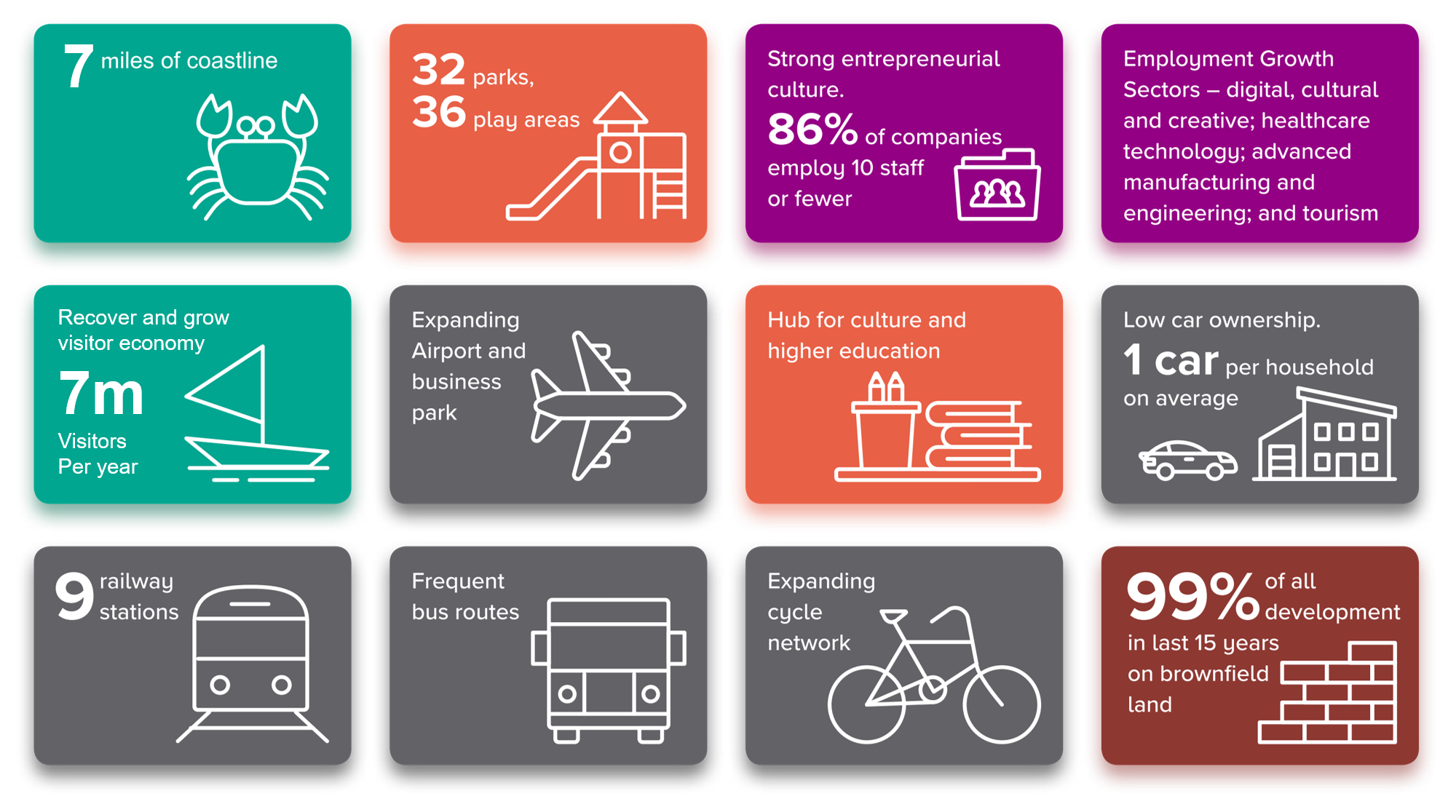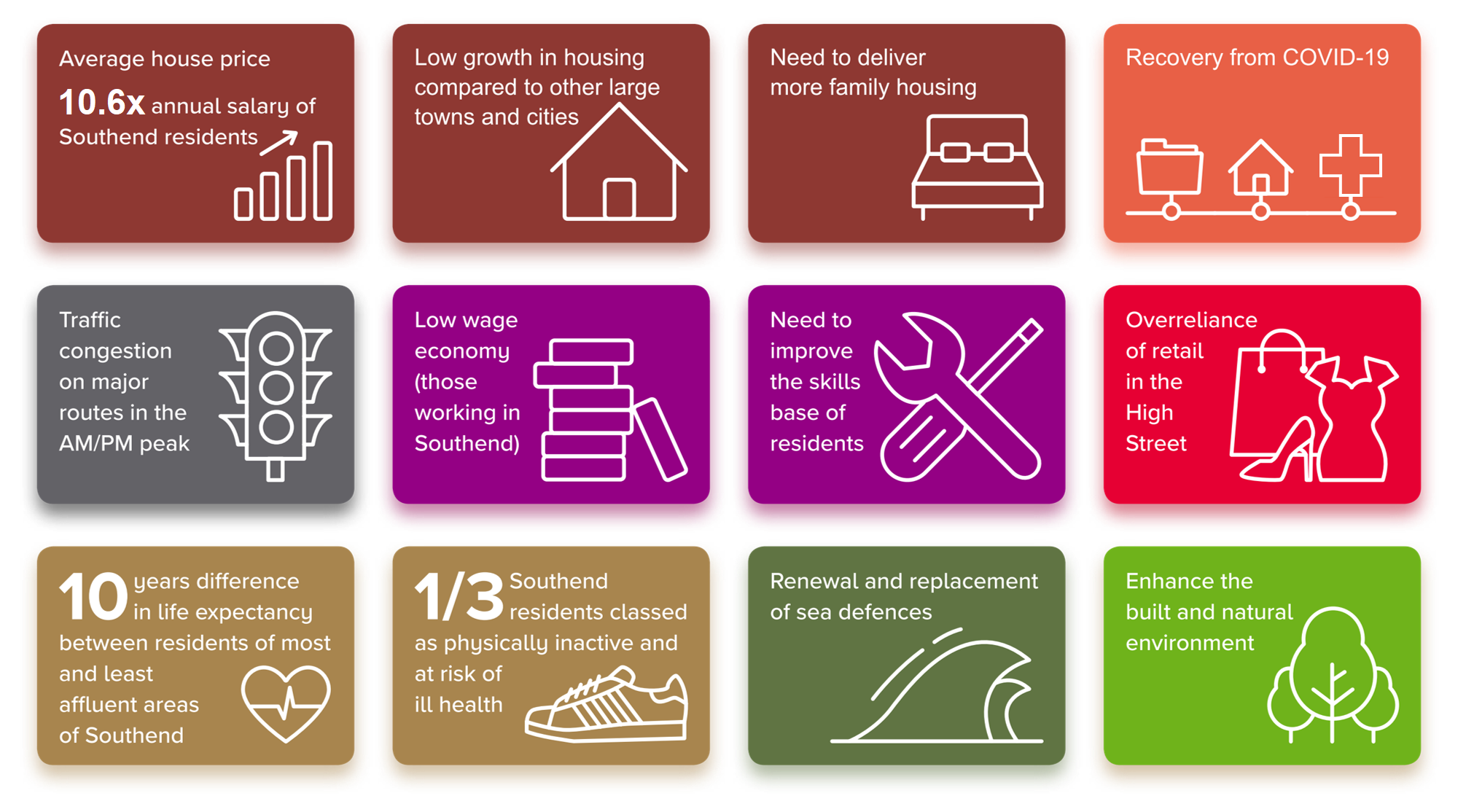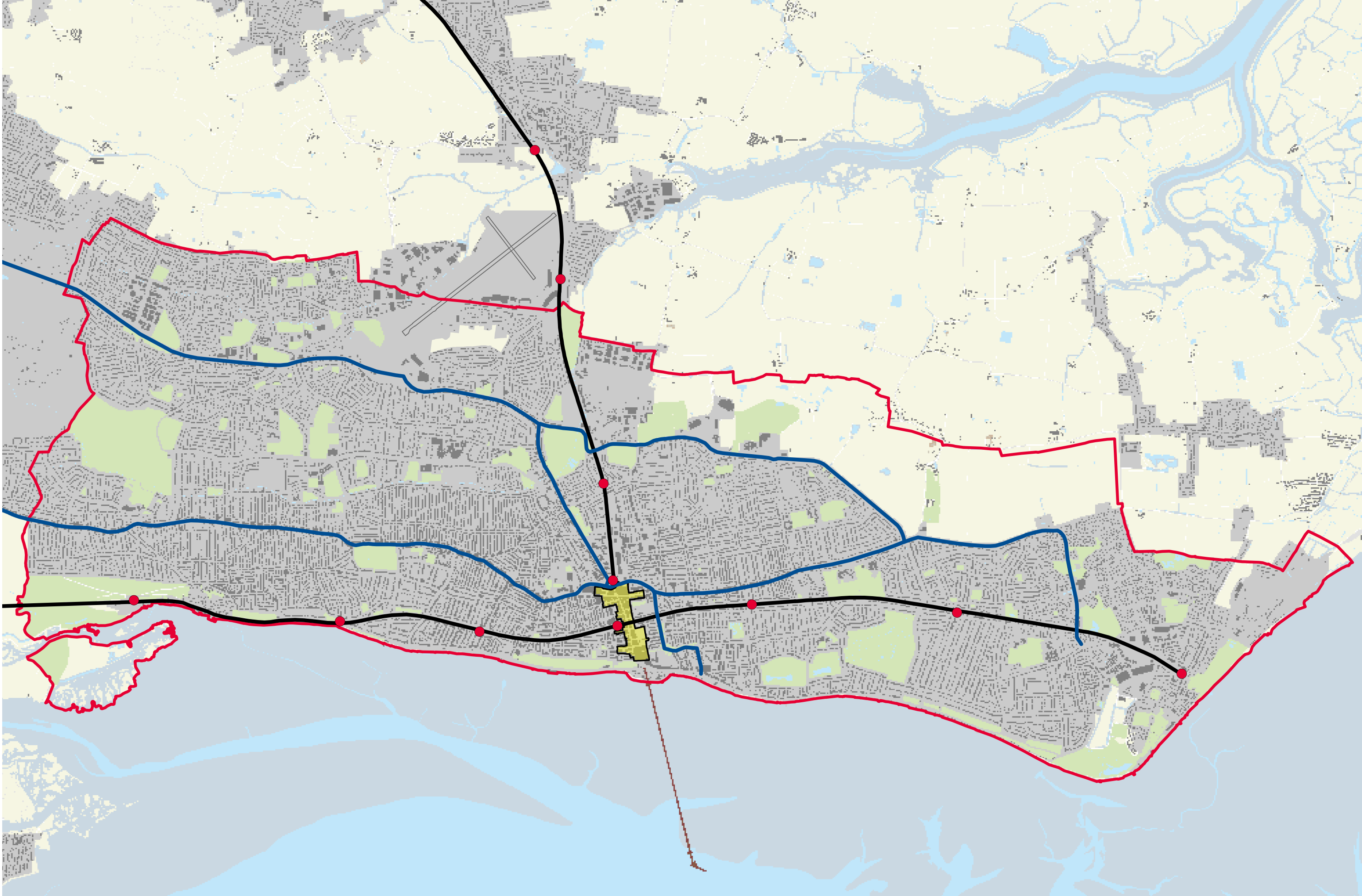Draft Spatial Objectives are set out below to guide your feedback. They are relevant to different areas of the Borough. You may consider that some are appropriate, or you may have different ideas as to what topics the spatial objectives should cover:
SO1 Achieve the urban renewal and sustainable regeneration of Southend’s urban area and optimise the use of suitable previously developed land for development, particularly within town centres and other locations well served by public transport.
SO2 Deliver sustainable new neighbourhoods to the north of the Borough to meet local housing and economic needs, particularly affordable and family housing. This will have regard to environmental considerations and the need to provide for supporting infrastructure including transport, health, education, community, recreation and leisure facilities.
SO3 Define the broad extent of the Green Belt boundary around the urban areas of Southend to prevent the coalescence of neighbouring towns. This will include reviewing the Green Belt to deliver new neighbourhoods and support managed growth of the town and supporting infrastructure during this plan period and beyond.
SO4 Identify, create, enhance and protect a comprehensive green and blue infrastructure network across the Borough, including existing public open green space and corridors linking to the provision of a new Country Park to the north-east of Southend, that would compensate for the loss of any land within the Green Belt and improve access to the surrounding countryside.
SO5 Secure economic recovery and enhance Southend’s important sub-regional role as a place for economic growth and opportunity and safeguard key business clusters, including those focussed round the town and district centres and London Southend Airport.
SO6 Establish a network of town, neighbourhood and local centres to serve as the heart of local communities; providing opportunities for higher density living and being the focus for economic and social activity and improving health and wellbeing through improved access by train, bus, foot and cycle to a mix of uses including shopping, services and jobs.
SO7 Promote and enhance the tourism, cultural and leisure offer, including visitor accommodation, having regard to the assets offered by the area, to attract greater visitor numbers and promote more overnight and longer stays.
SO8 Identify new and improved strategic transport corridors, including highways, rail, bus, cycle and pedestrian provision, essential to realising economic growth.
SO9 Promote modal shift through improved sustainable and active travel and the effective management of parking that supports growth of the town centre, tourism sector and London Southend Airport.
SO10 Secure the social and physical infrastructure related to improving the health, education, lifelong learning and wellbeing of all sectors of the community.
SO11 Facilitate the delivery of a relocated stadium for Southend United Football Club at Fossetts Farm in north Southend.
SO12 Facilitate growth of London Southend Airport to realise its potential in becoming a zero carbon regional transport hub providing for significant new employment opportunities and improved strategic surface access subject to environmental safeguards.
SO13 Ensure heritage assets and their setting are conserved and enhanced so they continue to make a full contribution to the character of Southend.
SO14 Secure the sustainable use of the River Thames and its Estuary as an asset for transport, leisure and business while respecting its environmental sensitivity.
SO15 Secure delivery of the plan’s spatial objectives through all relevant delivery bodies and their strategies.
Question 1.1c Spatial Objectives
Have your say………Please explain your answers
1.1c Do you agree with the draft Spatial Objectives? Please explain your answer.
Map 1: Southend-on-Sea Borough
Figure 5: Strengths and Opportunities

Figure 6: Challenges

